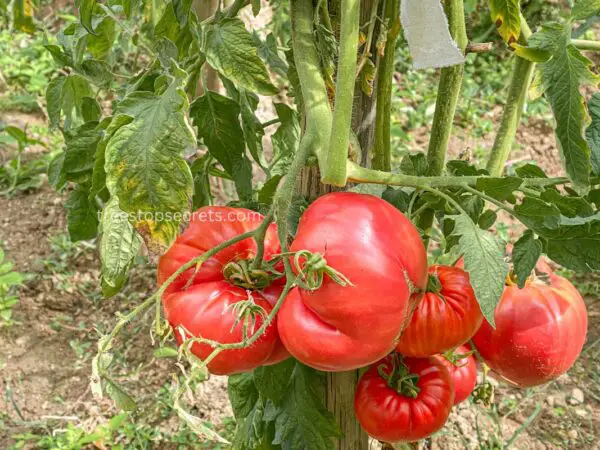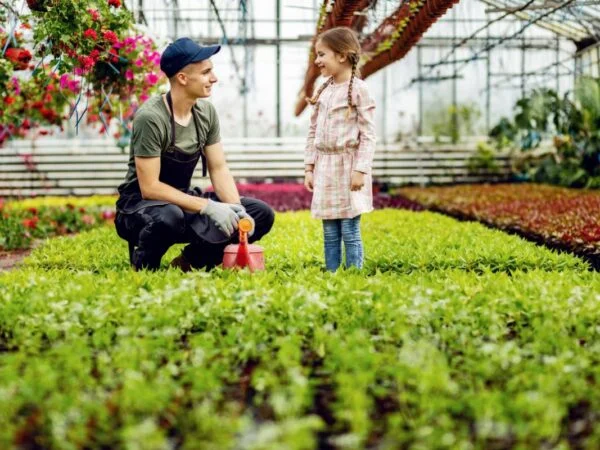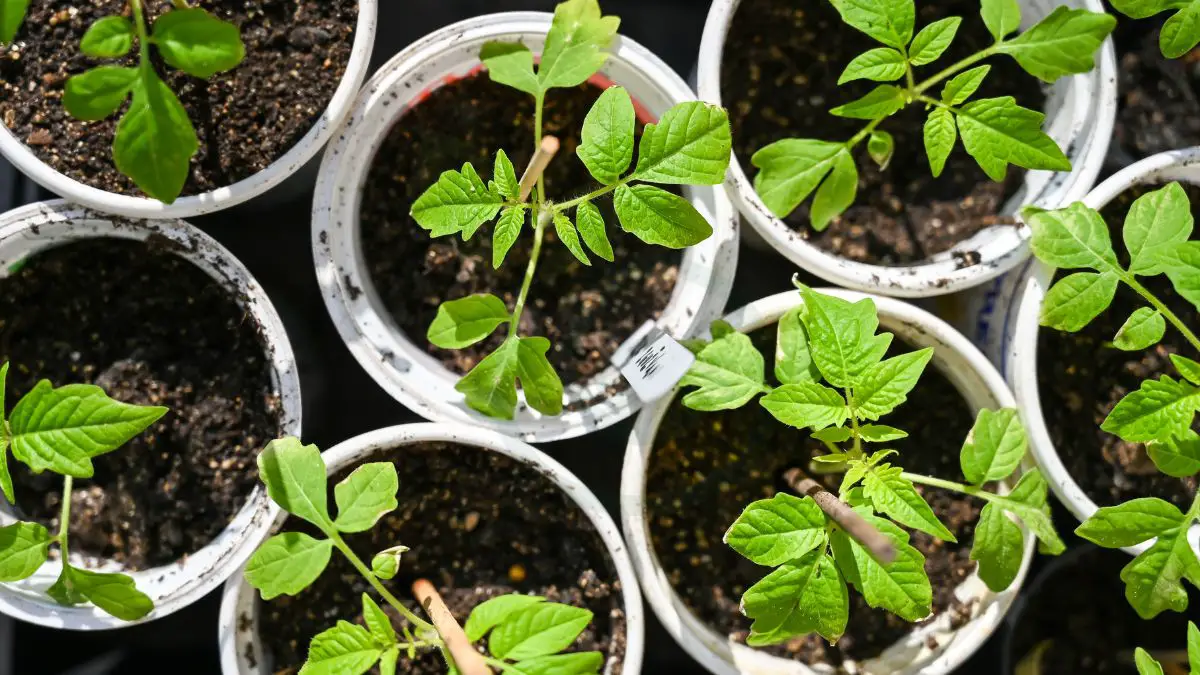
When to start tomato seedlings? Understanding the optimal timing for starting tomato seedlings can greatly impact your gardening success.
Tomato seedlings should typically be started indoors 6-8 weeks before the last expected frost date in your area using starter pots. This allows them to establish strong roots and develop into healthy plants before transplanting outdoors. However, this timing may vary depending on factors such as your specific climate zone, the variety of tomato being grown, and your desired planting schedule. Consult local gardening resources or extension offices for precise recommendations tailored to your region. Additionally, consider factors like timing, season, soil temperature, and weather forecasts when determining the best time to start your tomato seedlings.
For more detailed guidance on timing, starting tomato seedlings, and maximizing your harvest, explore reputable gardening books, online forums, and university extension resources for comprehensive tips and advice. Happy gardening!
Key Takeaways
- Start tomato seedlings indoors in a container 6-8 weeks before the last frost date for optimal growth, timing, and early harvest.
- Choose tomato varieties based on your climate, space, and taste preferences to ensure successful growth.
- Prior to planting, prepare the soil with compost and ensure proper drainage to promote healthy root development.
- Provide seedlings with adequate light, warmth, and moisture to prevent legginess and promote strong growth.
- When transplanting, handle seedlings carefully to avoid root damage and acclimate them gradually to outdoor conditions.
- Regularly monitor and adjust watering, fertilizing, and pest control practices to support healthy tomato plant growth.
Optimal Timing Insights
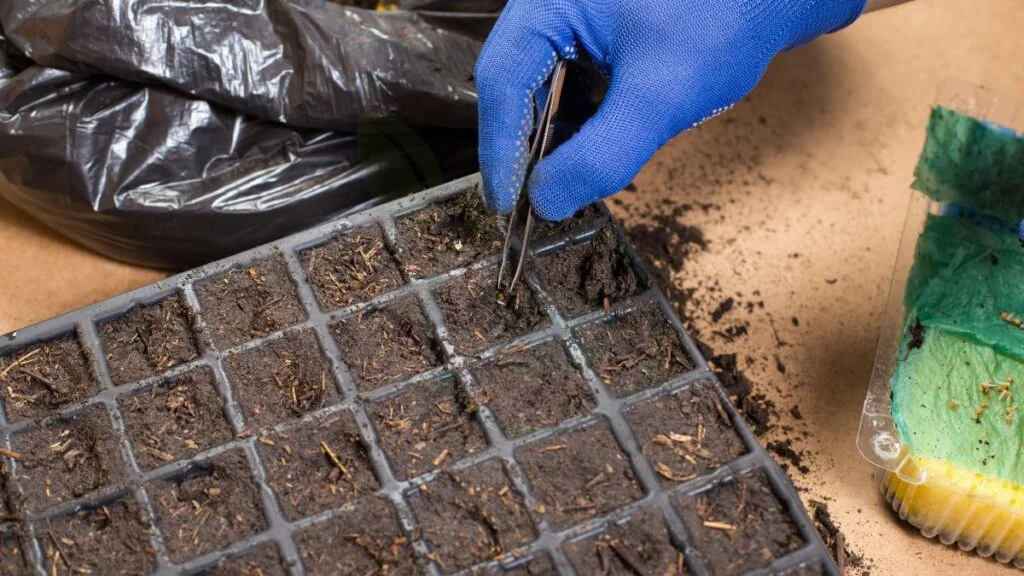
USDA Zone Considerations
Identify your USDA zone to determine the best time to start tomato seedlings. Research the average last frost date in your specific USDA zone. Adjust your planting schedule based on the frost patterns in your region to start seed.
Light Requirements
Ensure your tomato seedlings receive at least 6-8 hours of sunlight daily. Consider using grow lights if natural light is insufficient. Monitor the light exposure to prevent leggy seedlings.
Plant Readiness
Check for true leaves on your seedlings before transplanting. Look for sturdy stems and healthy foliage as signs of readiness. Avoid transplanting seedlings too early to prevent stress.
Starting Indoors Basics
Choosing Pots
When starting tomato seedlings indoors, it's crucial to select pots with drainage holes. This helps prevent waterlogging, which can harm the young plants. Opt for biodegradable pots for easier transplanting into the garden later on. Consider the pot size based on the seedling's root system to provide ample space for growth.
Soil Mix Selection
For successful tomato seedling growth, choose a well-draining soil mix that is rich in organic matter. Avoid using heavy soils that can lead to waterlogged roots and hinder development. Consider adding perlite or vermiculite to the soil mix for improved aeration, promoting healthy root growth.
Planting Techniques
Seed Depth
Plant tomato seeds at a depth of 1/4 inch in the soil for optimal germination. Ensure consistent moisture during this stage by lightly covering the seeds. Avoid planting seeds too deep as it may impede germination and delay growth.
Watering Tips
When caring for tomato seedlings, ensure to water them consistently to keep the soil evenly moist. Use room-temperature water to prevent shock to the delicate young plants. Avoid overwatering, as it can lead to root rot and compromise the health of the seedlings.
Temperature Control
Maintain a temperature range of 65-70 degrees Fahrenheit for optimal growth of tomato seedlings indoors. Protect them from sudden temperature fluctuations that can cause stress and affect their development negatively. Consider using a heat mat during germination to provide consistent warmth for healthy sprouting.
Tomato Varieties Specifics
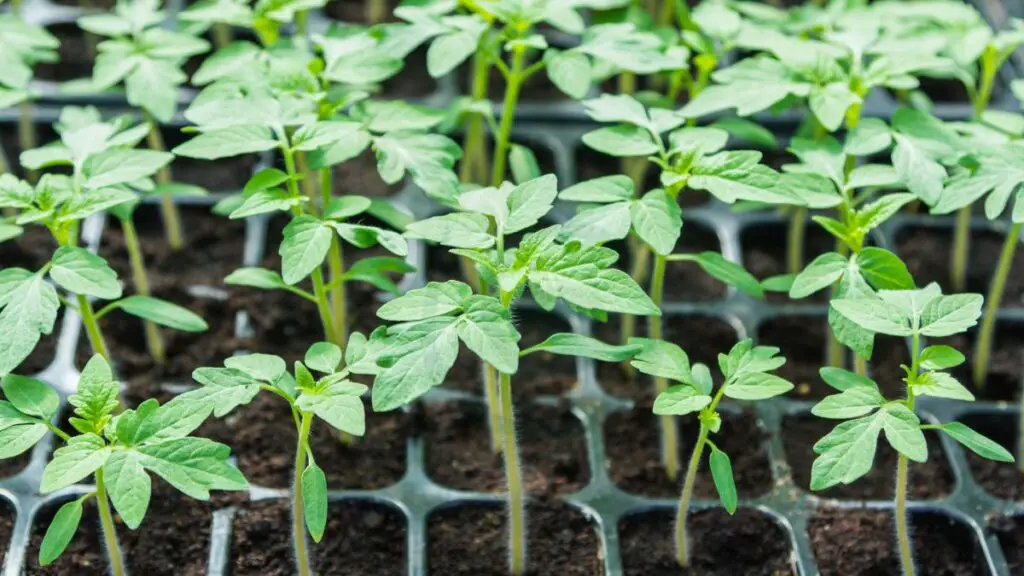
Variety Differences
When selecting tomato varieties, it's essential to consider your climate and taste preferences. Heirloom varieties offer unique flavors and colors, adding diversity to your garden. Researching disease-resistant options can promote better overall plant health.
- Heirloom varieties for unique flavors and colors
- Disease-resistant varieties for better plant health
Specific Needs
Supporting indeterminate tomato seedlings with stakes or cages is crucial for their growth. Companion planting can help deter pests and enhance the overall growth of your tomatoes indoors. Adjusting watering and feeding schedules according to each variety's specific requirements is key.
- Provide support for indeterminate tomato varieties with stakes or cages
- Consider companion planting to deter pests and enhance growth
Pre-Planting Strategies
Space Considerations
Tomato seedlings require adequate space for optimal growth. Ensure each plant has at least 2-3 feet of space to spread out.
To prevent overcrowding, space the seedlings approximately 18-24 inches apart in rows. This spacing allows for proper air circulation and sunlight exposure.
Consider using support structures like cages or stakes to keep the plants upright as they grow taller. This helps prevent overcrowding and ensures healthier plants.
Preparations for Success
Prior to planting tomato seedlings, prepare the soil by mixing in organic compost or fertilizer. This enriches the soil with essential nutrients for healthy plant growth.
Ensure the soil has good drainage to prevent waterlogging, which can lead to root rot. Incorporate organic matter like peat moss or perlite to improve drainage.
Water the soil thoroughly before planting to ensure it is moist but not waterlogged. This provides a good starting environment for the seedlings to establish their roots.
Seedling Care Tips
Providing Light
To ensure healthy seedlings, adequate light is crucial. Seedlings need 14-16 hours of light daily.
Windows vs Grow Lights
Windows can provide natural sunlight, but grow lights offer consistent, adjustable light for optimal growth.
Upgrading Containers
Transplanting spindly seedlings into larger containers prevents root binding and promotes healthier growth.
Caring Practices
- Maintain consistent moisture levels to prevent damping off.
- Provide good air circulation to avoid mold and disease.
- Fertilize lightly to support healthy growth without overwhelming the cotyledon leaves.
Effective Planting Methods
Technique Tips with Photos
Plant tomato seedlings in well-draining soil to prevent waterlogging, ensuring healthy root development and growth. Water consistently to maintain soil moisture levels without overwatering, which can lead to root rot.
Consider using peat pots for planting as they are biodegradable and reduce transplant shock. Place seedlings in a warm area with ample sunlight to promote strong stem development and prevent legginess.
Support growing plants with stakes or cages to prevent sprawling and ensure proper air circulation around the foliage. Prune lower leaves regularly to enhance airflow and reduce the risk of diseases such as blight.
Troubleshooting Issues
If seedlings appear leggy, increase sunlight exposure or adjust the room temperature to encourage compact growth. Yellowing leaves may indicate nutrient deficiencies; consider applying balanced fertilizer according to package instructions.
Wilting seedlings could signal overwatering or underwatering issues. Adjust watering frequency accordingly and ensure proper drainage to prevent waterlogged soil, which can suffocate roots leading to wilting.
Inadequate support for growing plants may cause stems to bend or break under the weight of fruit. Install sturdy stakes or cages early on and tie plants gently for additional support as they grow taller.
Transplanting Strategies
Readiness for Planting
To determine the readiness for planting tomato seedlings, observe the seedlings' size and health. Ensure they have at least two sets of true leaves. Seedlings need to be sturdy and vibrant before transplanting them into the garden soil.
Consider the weather conditions as well. Avoid transplanting during periods of extreme heat or cold, as this can shock the delicate seedlings. Opt for a cloudy day or late afternoon for a successful transplant.
Transplanting Techniques
When it comes to transplanting techniques, handle the seedlings carefully by their leaves to avoid damaging the stems. Dig a hole in the soil slightly larger than the root ball to accommodate proper growth.
Gently place each seedling in its hole, ensuring that the soil level matches that of the container. Compact the soil around the base of the plant to provide stability and optimal contact with roots.
Post-Transplant Care
Monitoring Growth
Monitor the growth of your tomato seedlings closely after transplanting to ensure they are adapting well. Look for signs of growth, such as new leaves and stems, which indicate successful acclimatization. Regularly check for any abnormalities like yellowing leaves or stunted growth that may signal issues.
Keep an eye out for any signs of transplant shock, such as wilting or drooping leaves. If you notice these symptoms, adjust your care routine promptly to help the seedlings recover. Healthy growth is characterized by vibrant green foliage and steady development.
Adjusting Care
Adjust watering frequency based on the moisture levels of the soil and the needs of the seedlings. Overwatering can lead to root rot, while underwatering can cause stress to the plants. Maintain a balance by checking the soil moisture regularly and watering accordingly.
Provide adequate sunlight for optimal growth. Ensure that the tomato seedlings receive at least 6-8 hours of sunlight daily. If natural light is insufficient, consider using grow lights to supplement their light requirements. Proper lighting promotes strong stem development and robust growth.
Harvesting Insights
Timing for Harvest
Tomato seedlings should be transplanted into the garden after the last frost date in your area. Early transplanting can stress seedlings due to cold temperatures, while late transplanting can impact fruit production.
To determine the ideal timing for harvesting tomato seedlings, consider factors such as weather conditions, soil temperature, and the variety of tomatoes being grown. Warm soil is crucial for healthy growth and fruit development.
Harvest Techniques
When harvesting tomato seedlings, use a sharp pair of scissors or pruners to cut the stem cleanly without damaging the plant. Avoid pulling or twisting the seedling, as this can cause harm to the roots.
After harvesting, gently remove any damaged leaves or branches from the seedlings to promote new growth. Proper pruning techniques help maintain plant health and encourage robust fruit production.
Summary
In mastering the art of starting tomato seedlings, you've gained insights into optimal timing, variety specifics, pre-planting strategies, care tips, effective planting methods, transplanting techniques, post-transplant care, and harvesting wisdom. By understanding these key elements, you're equipped to nurture robust tomato plants from seedlings to harvest. Remember to provide consistent care and attention to your seedlings as they grow. Your commitment will yield bountiful tomatoes that are flavorful and fresh. Take action now by applying these strategies to kickstart your tomato gardening journey and savor the satisfaction of harvesting your homegrown produce.
Frequently Asked Questions
When is the best time to start tomato seedlings?
To determine the ideal timing for starting tomato seedlings, consider factors like your local climate and the specific tomato variety you are growing. In general, it's recommended to start tomato seedlings indoors 6-8 weeks before the last frost date in your area.
How can I care for tomato seedlings effectively?
Ensure your tomato seedlings receive ample sunlight, consistent watering, and proper ventilation to prevent diseases. Use well-draining soil and provide support as they grow. Avoid overwatering to prevent root rot and maintain a warm environment for optimal growth.
What are some pre-planting strategies for tomato seedlings?
Before planting tomato seedlings outdoors, harden them off gradually by exposing them to outdoor conditions like sunlight and wind. Prepare the soil with organic matter, such as compost, to improve drainage and nutrient availability. Consider using mulch to retain moisture and suppress weeds.
What are important tips for transplanting tomato seedlings?
When transplanting tomato seedlings into the garden, choose a sunny location with well-drained soil. Dig a hole deep enough to accommodate the roots and plant them slightly deeper than they were in their containers. Water thoroughly after transplanting to help reduce stress on the plants.
How can I optimize post-transplant care for my tomato plants?
After transplanting tomato seedlings, continue to water them regularly, especially during dry periods. Monitor for signs of pests or diseases and take prompt action if necessary. Consider providing support like stakes or cages as the plants grow to prevent bending or breaking of stems.
Any insights on harvesting tomatoes from mature plants?
Harvest tomatoes when they reach full color but are still firm to the touch. Gently twist or cut the fruits from the plant to avoid damaging the stems. Store harvested tomatoes at room temperature away from direct sunlight until ready to use for optimal flavor and freshness.
Image Source: Paid image from CANVA

